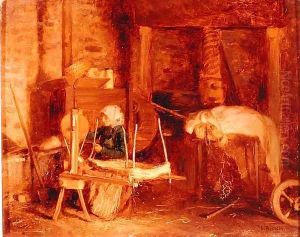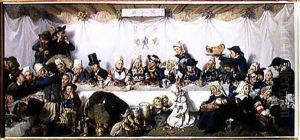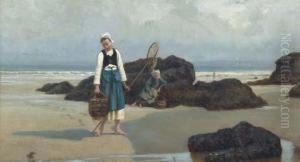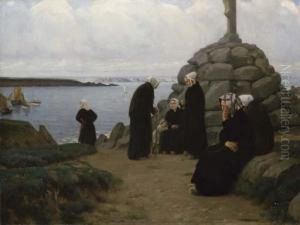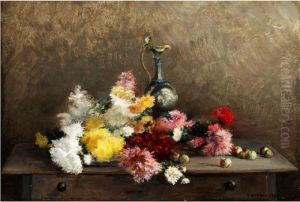Victor Marie Roussin Paintings
Victor Marie Roussin was a French artist known primarily for his landscape paintings and contributions to the Barbizon school of painters. Born in 1812 in Paris, Roussin developed an interest in art at an early age and went on to study under recognized artists of his time. Though not as widely known as some of his contemporaries like Jean-François Millet or Théodore Rousseau, Roussin's work reflected a similar dedication to naturalistic representation and a focus on the rural French countryside.
Roussin's early career was marked by the influence of the Romantic movement, with an emphasis on expressive landscapes that conveyed a sense of mood and atmosphere. However, as his style evolved, he began to embrace the principles of the Barbizon school, characterized by a more realistic and direct approach to the depiction of nature. The Barbizon painters were part of a larger movement toward realism in art, which emerged in the mid-19th century as a reaction against the dominant academic styles of the time.
Throughout his career, Roussin exhibited his work in various salons and received recognition for his landscapes that often featured the forests of Fontainebleau, a popular subject among the Barbizon painters. His paintings are characterized by their textured brushwork and a palette that captures the nuanced colors of the natural world. Unlike some of his peers who focused on the harsher aspects of rural life, Roussin's landscapes often conveyed a sense of tranquility and the timeless beauty of nature.
Victor Marie Roussin passed away in 1883, leaving behind a body of work that, while not as widely celebrated as that of some of his contemporaries, contributed to the rich tapestry of French landscape painting in the 19th century. Today, his paintings can be found in various art collections and continue to be appreciated by those interested in the Barbizon school and the evolution of landscape painting in France.
